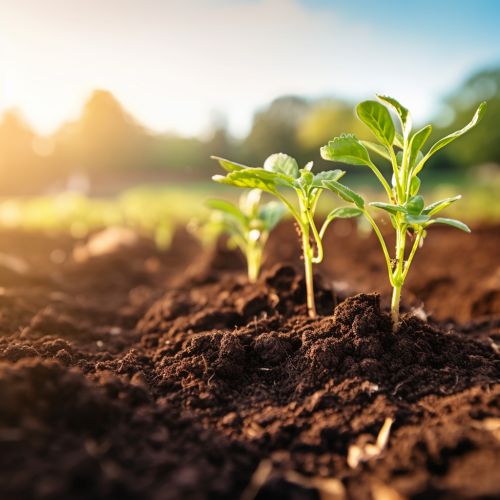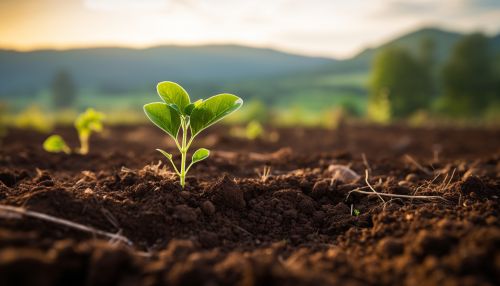Soil Conservation
Introduction
Soil conservation is the process of preventing soil degradation and preserving soil health. It involves various strategies and techniques that aim to maintain the soil's capacity to support life, including human life and ecosystems. Soil conservation is crucial for sustainable agriculture, forestry, and land use planning. It is a multidisciplinary field that involves several branches of science, including soil science, agronomy, geography, and environmental science.


Soil Degradation
Soil degradation refers to the deterioration of soil quality and its productive potential due to various factors. These factors can be natural, such as erosion by wind and water, or human-induced, such as deforestation, overgrazing, and improper agricultural practices. Soil degradation can lead to a loss of soil fertility, a decrease in agricultural productivity, and an increase in soil erosion. It can also contribute to other environmental problems, such as loss of biodiversity, water pollution, and climate change.
Soil Conservation Techniques
There are numerous soil conservation techniques that can be employed to prevent soil degradation and maintain soil health. These techniques can be broadly classified into agronomic, vegetative, and structural measures.
Agronomic Measures
Agronomic measures are practices that improve the soil's physical and chemical properties and enhance its resistance to erosion. These measures include crop rotation, cover cropping, and the use of organic manures and fertilizers. Crop rotation involves growing different types of crops in the same area in sequential seasons to improve soil fertility and control pests and diseases. Cover cropping is the practice of growing specific plants primarily for the benefit of the soil rather than the crop yield. Organic manures and fertilizers improve soil fertility by adding nutrients and organic matter to the soil.
Vegetative Measures
Vegetative measures involve the use of plants to protect the soil from erosion. These measures include afforestation, reforestation, and the establishment of grass waterways. Afforestation and reforestation involve planting trees in areas where there were no trees or where trees have been cut down. Grass waterways are natural or constructed channels that are shaped and graded and established with suitable vegetation to carry surface water across farmland without causing soil erosion.
Structural Measures
Structural measures are physical constructions that reduce the speed of water flow, thereby reducing soil erosion. These measures include terracing, contour bunding, and the construction of check dams. Terracing involves shaping the land into a series of steps to slow down water flow and prevent soil erosion. Contour bunding involves building embankments along the contour lines of sloping land to trap and hold rainwater, thereby reducing runoff and soil erosion. Check dams are small dams constructed across a watercourse to reduce water flow speed.
Importance of Soil Conservation
Soil conservation is essential for several reasons. It helps maintain soil health, which is crucial for sustainable agriculture and food security. By preventing soil degradation, conservation practices ensure that the soil continues to provide essential ecosystem services, such as nutrient cycling, water filtration, and habitat for biodiversity. Soil conservation also plays a role in climate change mitigation. Healthy soils can sequester carbon, helping to reduce greenhouse gas concentrations in the atmosphere.
Challenges in Soil Conservation
Despite the known benefits of soil conservation, there are several challenges in its implementation. These challenges include lack of awareness about the importance of soil conservation, economic constraints, and policy issues. There is a need for greater education and outreach to farmers and landowners about the benefits of soil conservation. Economic incentives may also be necessary to encourage the adoption of conservation practices. Policy interventions, such as the development of sustainable land use policies and the enforcement of soil conservation laws, are also crucial.
Conclusion
Soil conservation is a critical aspect of sustainable land management and environmental protection. By employing various techniques and strategies, it is possible to prevent soil degradation, maintain soil health, and ensure the continued provision of essential ecosystem services. However, there are several challenges in the implementation of soil conservation that need to be addressed. With the right policies and incentives, along with increased awareness and education, it is possible to promote soil conservation and ensure the sustainability of our soil resources.
